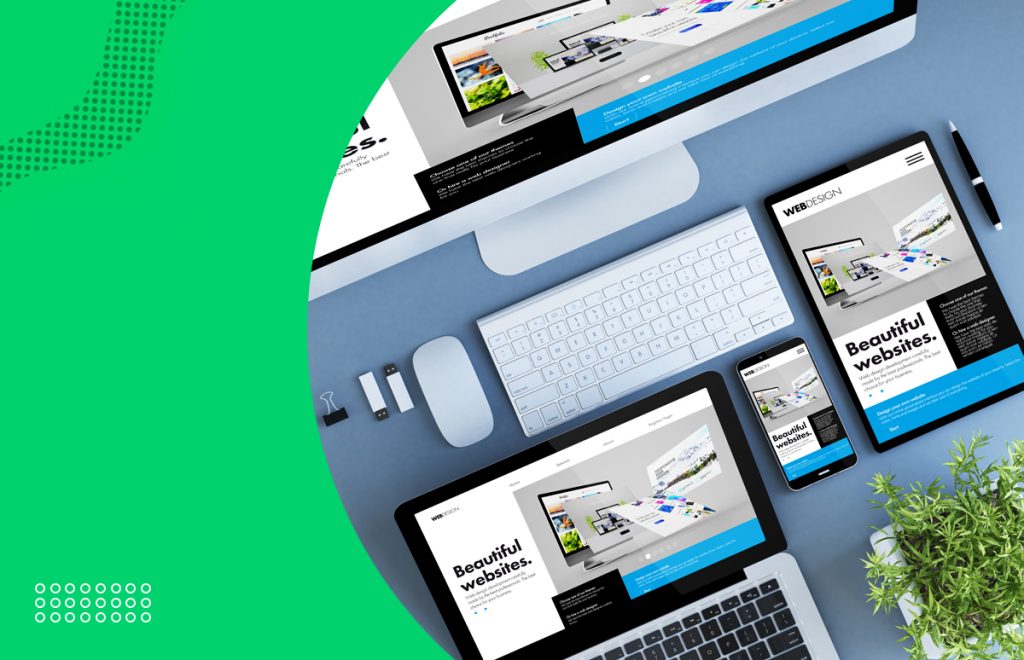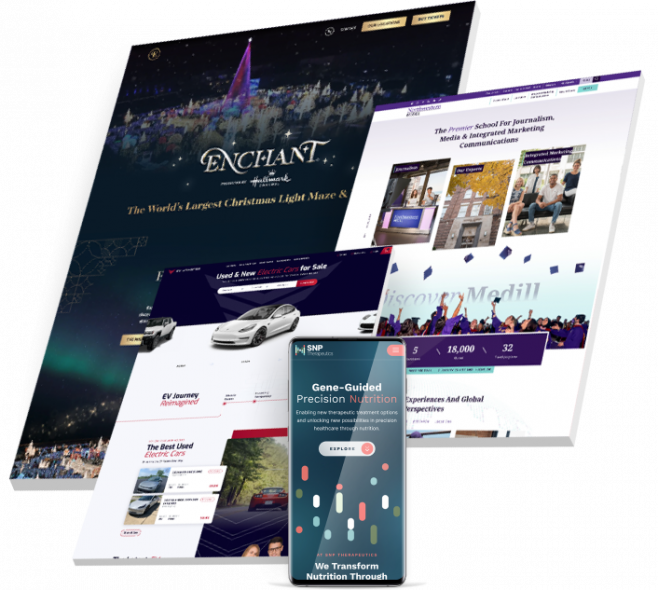The Ultimate Guide to Website Design: Tips for Creating Stunning Websites
The Ultimate Guide to Website Design: Tips for Creating Stunning Websites
Blog Article
Modern Website Design That Catches Attention and Converts
In a significantly electronic landscape, contemporary internet site design has emerged as a critical aspect in recording user attention and driving conversions. As we explore these vital components, it ends up being clear that recognizing their interplay can significantly affect a web site's efficiency and individual satisfaction.
Relevance of Visual Power Structure
Visual hierarchy is an important aspect in site design, as it guides users' focus and boosts their general experience. By tactically organizing content, developers can guide individuals to the most crucial information initially, consequently raising involvement and boosting usability. Effective visual pecking order uses numerous methods, including dimension, spacing, contrast, and color. Bigger aspects naturally attract the eye, while contrasting shades can stress crucial messages, making them stick out among even more restrained parts.
Incorporating a logical circulation in content plan is essential; for instance, putting one of the most vital info on top of a page cultivates immediate acknowledgment. Regular use of typography, such as varying font sizes and styles, helps develop a clear content structure. This organization not just help in navigation however likewise constructs depend on, as customers really feel more comfortable when they can easily locate what they are searching for.
Eventually, a well-executed aesthetic pecking order not just boosts visual allure yet also dramatically influences customer actions. By focusing on crucial elements and ensuring a seamless experience, designers can properly transform site visitors right into consumers, reinforcing the value of this fundamental style principle in modern internet site growth.
Responsive Layout for All Instruments
Developing a smooth experience across various gadgets is vital in today's electronic landscape, where customers gain access to websites from tablet computers, desktops, and mobile phones alike. Receptive layout is a crucial method that makes sure websites adjust fluidly to various display resolutions, dimensions, and positionings. By using adaptable grids, pictures, and CSS media inquiries, designers can create formats that keep visual integrity and performance, no matter of the gadget being utilized.
The value of responsive design extends beyond looks; it straight influences customer engagement and conversion prices. A site that works well on all tools urges longer visits and reduces bounce prices, as customers are much more most likely to communicate with material that is very easy to browse. Search engines, particularly Google, prioritize mobile-friendly sites in their positions, making receptive style a crucial part of search engine optimization (SEO)
Incorporating receptive layout not only improves individual experience however additionally streamlines the advancement procedure. By developing a solitary site that functions across gadgets, services can save time and sources contrasted to creating different mobile and desktop versions. Inevitably, responsive style is an essential technique for modern internet site design, making sure accessibility and contentment for all users, no matter of their tool.
Involving Interactive Aspects
While a responsive style lays the groundwork for a practical internet site, integrating appealing interactive aspects is vital for recording individual focus and promoting much deeper links. Website Design. Interactive components, such as computer animations, tests, and clickable infographics, create a much more dynamic individual experience, encouraging site visitors to invest even more time on the website
Integrating interactive features can additionally guide individuals via complicated info, making it easier to digest material. For instance, interactive sliders can show product variations, while ingrained videos can supply demonstrations or testimonials that resonate even more than fixed images or text. Moreover, gamification methods, like benefits for involving official website or completing tasks with content, can enhance customer inspiration and retention.
Reliable use of interactive elements not only improves the user experience however can likewise lead to greater conversion prices. It is necessary to stabilize interactivity with efficiency; overly intricate features might prevent site speed, negatively impacting individual satisfaction.
Streamlined Navigation Practices
Efficient navigating is a cornerstone of any type of effective site, as it directly affects customer experience and additional hints material ease of access. Streamlined navigating techniques guarantee that individuals can quickly find info, boosting their communication with the website. A well-structured navigation menu need to be simple and user-friendly, generally including a minimal variety of primary categories to prevent overwhelming site visitors.
To achieve streamlined navigation, developers should focus on an ordered framework that rationally arranges content. Executing breadcrumb tracks can provide users with context regarding their current place within the site, enabling for seamless backtracking. Furthermore, making use of drop-down food selections can successfully save space while still giving accessibility to subcategories.
Receptive style is crucial, as navigating ought to be practical across all devices (Website Design). Mobile users, particularly, benefit from touch-friendly menus and collapsible areas that keep usability without endangering aesthetics

Efficient Call-to-Action Strategies
A well-crafted call-to-action (CTA) is important for leading individuals toward wanted results on an internet site, as it motivates them to involve with material or purchase. To optimize their effectiveness, CTAs must be clear, compelling, and purposefully put throughout the website.
First, utilize action-oriented language that connects necessity or worth, such as "Begin," "Join Currently," or "Case Your Discount rate." This language not just motivates individuals yet likewise establishes clear expectations special info regarding the following actions.
Second, consider style aspects; CTAs need to stick out aesthetically with contrasting shades, ample whitespace, and popular positioning. A switch that is very easy to see and click increases the chance of user interaction.
Furthermore, individualizing CTAs based on customer actions or demographics can considerably improve involvement. Customized messages resonate much more with individuals, driving greater conversion prices.

Conclusion
These parts jointly boost user experience, ensuring that visitors continue to be involved and inspired to check out material additionally. By prioritizing these design concepts, organizations can dramatically boost customer retention and conversion prices, eventually leading to greater success in the electronic landscape.
In a significantly digital landscape, modern website layout has actually emerged as a crucial element in capturing customer interest and driving conversions.Visual hierarchy is an essential element in internet site style, as it guides individuals' attention and boosts their overall experience.The importance of receptive design extends past appearances; it straight impacts customer interaction and conversion rates.Including responsive layout not only boosts individual experience yet also improves the development procedure. Inevitably, responsive style is a fundamental strategy for modern-day site layout, making sure access and contentment for all individuals, no matter of their device.
Report this page